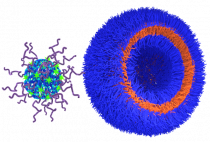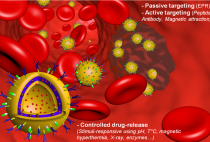![Up-converting β-NaY0.8[Yb0.18Er0.02]F4 nanoparticles coated by superparamagnetic γ-Fe2O3 nanosatellites: elaboration, characterization and in vitro cytotoxicity figure](https://www.lcpo.fr/media/cache/vertical_items_list_item_66x45_inset_up/uploads/publication/image/6704f97a6c88c768997415.jpg?2020)
Up-converting β-NaY0.8[Yb0.18Er0.02]F4 nanoparticles coated by superparamagnetic γ-Fe2O3 nanosatellites: elaboration, characterization and in vitro cytotoxicity Journal article
Parvizian Mahsa, Mnasri Walid, Pleckaitis Marijus, Karabanovas Vitalijus, Khan Haziq, Nowak Sophie, Gam-Derouich Sarah, Ben Tahar Lofti, Sandre Olivier, Ammar Souad
Journal title: RSC Advances, Volume(s): 14, Issue(s): 43, Page(s): 31486-31497 https://hal.science/hal-04722512/document 10.1039/d4ra00909f (2024)





